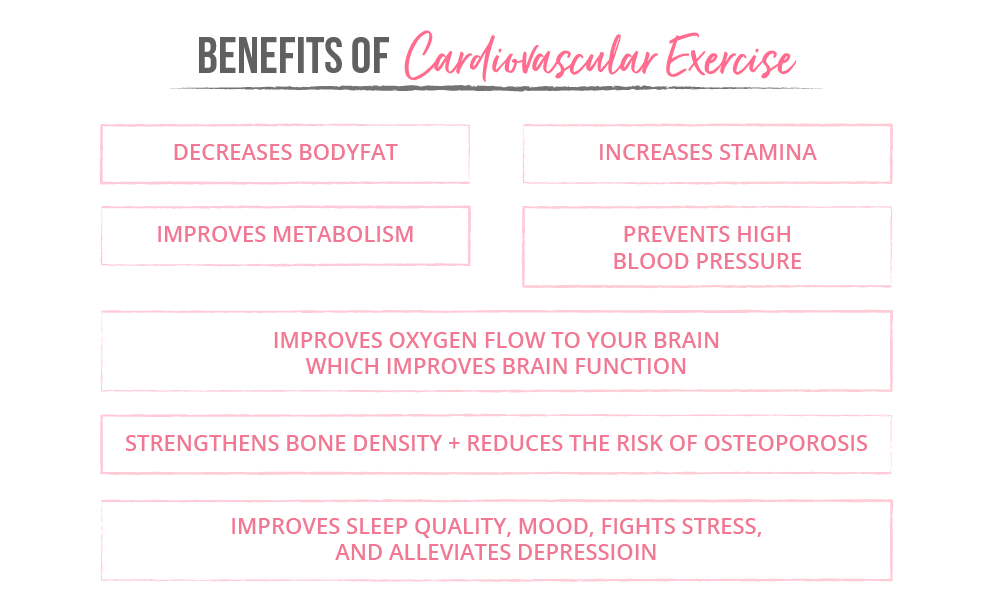What is Cardiovascular Training?
by Anna Victoria in Fitness
Cardio is short for “cardiovascular,” a term that refers to your circulatory system, which consists of your heart and the blood vessels. When you do cardio, the aim is to increase your heart rate (the number of times your heart beats per minute). When your heart rate increases, the blood flow in your body also increases, which is how oxygen and nutrients are delivered to all parts of your body. In order for an activity to be considered a cardiovascular exercise, it needs to bring your heart rate up to at least 50% of your maximum heart rate.
TRY THE FIT BODY APP FREE FOR 7 DAYS! DOWNLOAD NOW.
Examples of cardio: running, biking, swimming, LISS, LIMIT, MISS, parts of HIIT, and sprints.

WHY SHOULD I COMBINE STRENGTH TRAINING AND CARDIO?
Both cardio and strength training play an important role in a balanced workout routine and need to be combined in order to achieve real results. However, there is still a common misconception that cardio alone is the most efficient way to lose weight and change your body composition. Cardio will undoubtedly help you lose weight and is great for you, but it will not tone and shape your body. In fact, doing too much cardio can result in muscle catabolism. As previously mentioned, muscle catabolism is when your body breaks down muscle for energy use which will, in turn, reduce muscle tone and limit your body’s ability to burn fat efficiently. Doing both strength training and cardio will allow your body to tighten, tone, burn fat efficiently, and give you the results you are looking for.

Email us at hello@fitbodyapp.com if you need any help with your cardio routine! Or if you have any questions on modifications, alternatives, or injuries, email the Fit Body Physical Therapist at pt@fitbodyapp.com. You get free PT consultations included in your Fit Body app membership!


